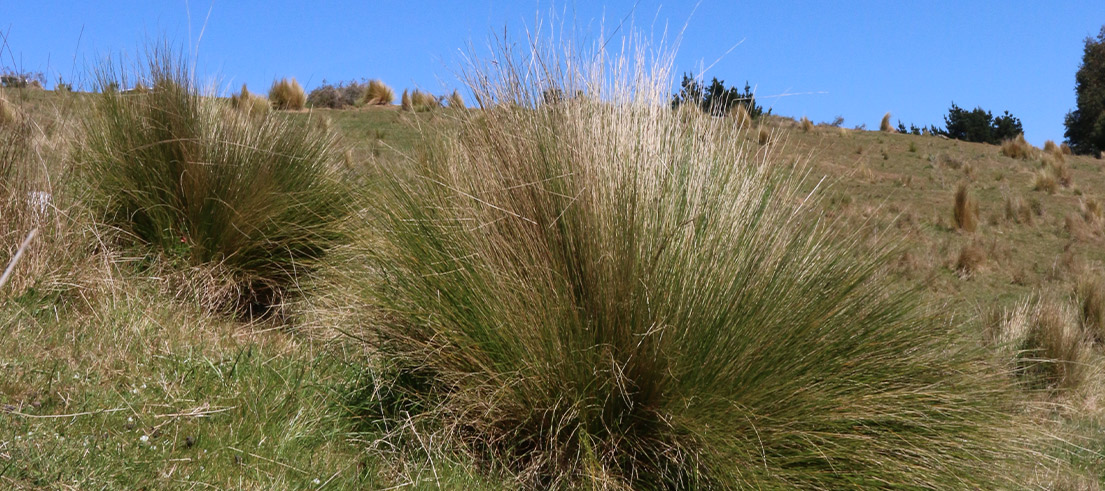
Getting ahead of nassella tussock spread
Controlling the spread of nassella tussock means regularly inspecting your property and taking appropriate action at the right time.
Nassella tussock is spreading in Canterbury. The invasive grass already occupies over 400,000 hectares in Canterbury across 1,450 properties.
Identifying nassella tussock
While it looks similar to other tussock species, Nassella tussock displaces other grasses leaving pasture unpalatable to stock. It can also spread rapidly when established.
Mature plants can produce up to 100,000 seeds, which are readily dispersed to neighbouring land by wind, water, stock, clothing, and machinery. Nassella can cope with exposed dry conditions, which enable it to establish and thrive.
There are almost certainly undiscovered infestations within Canterbury, but these can be difficult to identify. Check out our guide to spotting nassella tussock.
Protect your neighbours
Our biosecurity team are working with landowners to identify nassella tussock, control its spread and reduce impacts on the environment.
Controlling nassella and keeping it to manageable levels is a cost to landowners. Surveying your land and removing plants annually protects your assets as well as neighbouring properties. We recommend you create a nassella tussock map of your property, or work with a contractor to do so.
When and how to remove plants
Canterbury land occupiers are required under the Canterbury Regional Pest Management Plan to control nassella annually before it seeds. Plants need to be removed by 30 September for most properties in Canterbury, or 31 October for high-density infestations in the Hurunui district.
If you are using contractors to remove plants, we recommend contacting them early. Completing your control work earlier in the year, may help you work around on-farm activities, such as lambing, which can clash with compliance dates in some areas.
We’re here to help. If you think you have nassella tussock on your property fill out a report online or if you have any questions contact us at biosecurity@ecan.govt.nz
